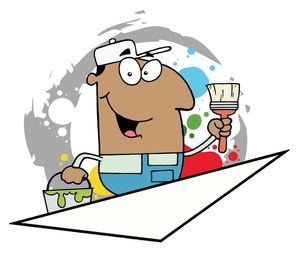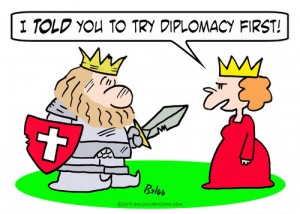You may have seen that Johnny Holland has a great new series of posts out entitled “What I bring to UX from…”. I love these posts because they help us to think across talents and professions to gleam lessons from other fields. One article in this series, What I bring to UX from… working with delinquents & young offenders, caught my eye. I started to recall a blog series that I started last year and never took the time to finish, Reasons why UX Designers Are Like Therapists. This article inspired the #5 reason that we are like therapists. That is, to be successful, we both need to practice diplomacy. (Here are links to Reason #1, Reason #2, Reason #3, Reason #4.)
In the Johnny Holland article, the author points out the skill of diplomacy. In short, ti is the ability to lead someone to see the errors of their own ways without pointing out their errors directly to them. If you have ever been in therapy, you probably know that this is the goal of your therapist. Not so much to “tell you” what is bothering you, but to use his/her skills to get you to see it for yourself. By doing this the therapist is empowering you to be self sufficient as well as to change your point of view in order to make you more successful at seeing better results in your therapy.
One could argue that as a UX Designer, you need the same skill. First, you need diplomacy within your project teams and client relationships in order to advocate for your designs and help people to better understand, for themselves, why your role exists and the value that you bring. Further, you need to use diplomacy to help persistent, opinionated team members and clients to see where and why their genius design solution ideas may or may not work as well. For example, you have a client that insists that his/her site needs to utilize breadcrumbs to help people navigate through the site more easily. You know the type of clients that I’m talking about, right? The opinionated ones (put nicely). After doing some analysis and informal research you realize that the client’s idea of using breadcrumbs is not the correct solution. How do you decide to solve the problem? You can push your ideas on them, OR you can utilize the skill of diplomacy to help paint a picture of why one idea is better than the other.

Second, you need the skill of diplomacy to help guide your users through the different products and services you are designing. You cannot just shove a site or a design at a user without first thinking of how that site or design helps to paint a clear point of view of how to complete the task or get the content the user needs. Thus design 101 is really a type of visual diplomacy (in a very high level sense).
By utilizing diaplomacy, the outcomes are similar to those of a therpist. You are allowing your project teams, clients and users to be more self sufficient as well as helping them to shape their own point of view. This is one of the artistic parts of UX design, getting people from both sides of the product (back end facing and front end facing) to see the narrative that you are creating for mutual product success. Teams and clients become better at understanding your role and your expertise, and users become better at being successful while using your products and services. It’s a win-win.

